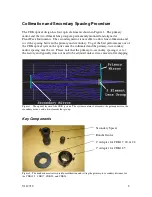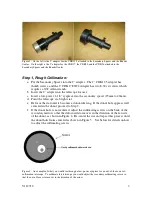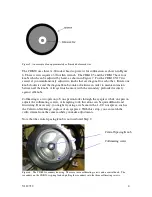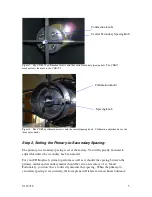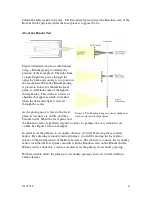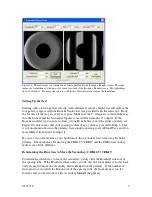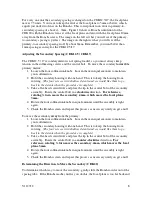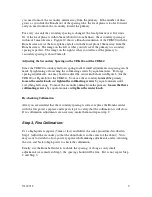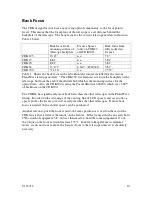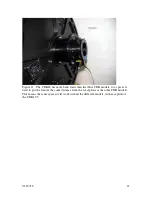
V112712
9
you need to move the secondary mirror away from the primary. If the number of lines
grows as you slide the Ronchi out of the spacing tube, the focal plane is too far forward
and you need to move the secondary toward the primary.
For every one unit the secondary spacing is changed, the focal plane moves five units.
Or, if the focal plane is within 5mm (about two ronchi lines), the secondary spacing is
within its 1mm tolerance. Figure 10 shows a Ronchi simulation of the CDK20 with the
Ronchi screen set at the focal plane and also with the focal plane 10mm away from the
Ronchi screen. The image on the left is what you will see if the primary to secondary
spacing is perfect. The image on the right is what you will see if the primary to
secondary spacing is about 2mm off.
Adjusting the Secondary Spacing on the CDK20 and the CDK24
Since the CDK20 secondary mirror is spring loaded, small adjustments in spacing can be
made by tightening or loosening the collimating screws by equal amounts. For large
spacing adjustments, one may need to adjust the center knob shown in Figure 6 (for the
CDK20) or Figure 8 (for the CDK24). To move the secondary
toward
the primary,
loosen the center knob
and
tighten the collimating screws
by equal amounts until
everything feels snug. To move the secondary
away
from the primary,
loosen the three
collimating screws
by equal amounts and
tighten the center knob
.
Re-checking Collimation
After you are satisfied that the secondary spacing is correct, replace the Ronchi ocular
with the low power eyepiece and repeat step 1 to verify that the collimation is still close.
If re-collimation adjustments are necessary, make them and repeat step 2.
Step 3, Fine Collimation:
Use a high-power eyepiece (5mm or less) and follow the same procedure described in
Step 1 (adjust the secondary so that the donut hole is in the center of the donut). You
may want to switch to a low-power eyepiece while making adjustments and re-centering
the star, and back to high power to check the collimation.
Finally, use the Ronchi Ocular to re-check the spacing. As long as only small
adjustments were made in Step 3, the spacing should still be fine. If it is not, repeat Step
2 and Step 3.


